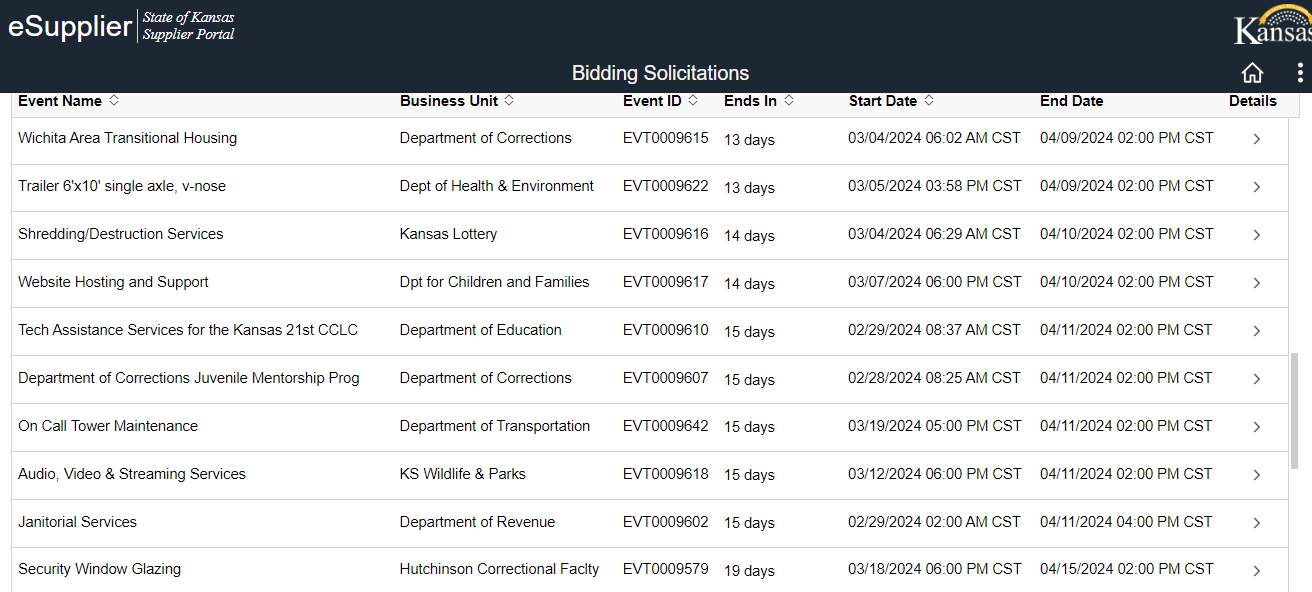Here at Greenwood Aerospace, we talk a lot about the federal procurement process. Government procurement is one of our primary functions here, and we have extensive experience in the process. With that said, the term “government procurement” covers a lot of territory.
There are different rules and processes between the dozens of federal agencies and departments that we have worked with, let alone the differences and intricacies of working with state government procurement offices.
Every state has its own set of rules, regulations, and statutes regarding government procurement. While we can’t go over all of those (we will include a resource list for Oklahoma and our neighboring states), we will discuss the general differences you should be aware of.
What Is Government Procurement?
Government procurement is the process by which government agencies acquire goods and services from the private sector. It is a complex process that involves several different steps, including developing a procurement plan, soliciting bids from vendors, evaluating bids, and awarding contracts. Government procurement is subject to several laws and regulations designed to ensure the process is fair and competitive.
There are a few key characteristics that pertain to government procurement (or public procurement) that you should be aware of before we talk about any differences between federal and state procurement:
- Regulations and compliance: All government procurement is subject to extensive regulations and compliance requirements. The goal is to promote fair competition, prevent corruption, and always ensure the best value for taxpayer dollars. Doing all these at once is difficult and not always possible, but that is the overarching goal.
- Transparency: All levels of government are generally required to conduct procurement processes with utter transparency. All information (within reason, depending on national security) should be open to present a fair balance of information. This is to ensure that all vendors have equal access to opportunities, selection criteria, and so on.
- Competition: Barring special circumstances (i.e., extremely unique projects, services, or products), the competitive bidding process is the standard used by all levels of government. This is to protect all parties involved; impropriety is dealt with harshly.
- Public interest: The entire point of government is to serve the public interest. Accordingly, government procurement exists with the public in mind. Factors like quality, cost-effectiveness, and social responsibility influence purchasing decisions in addition to traditional criteria like price and technical specs.
- Complexity: government procurement is complex. There is no denying it or getting around it. It is especially complicated for large projects or when contracts involve numerous stakeholders. Public procurement involves navigating confusing and muddled bureaucratic processes, complying with regulations, and addressing a slew of stakeholder interests.
Key Differences Between State and Federal Procurement
Alright, so we have laid the foundation for public procurement. The concept itself is consistent whether at the state or federal level; what is different is the regulatory framework.
Statutory Authority
Different sets of laws and regulations govern state and federal procurement. States often have their own procurement laws, while federal procurement is regulated by statutes such as the Federal Acquisition Regulation (FAR) and specific agency regulations.
Remember that while every federal agency will certainly have its own SOPs, internal rules, and processes, the statutory requirements will remain consistent because they are federal statutes.
When you are working with states, it will vary from state to state. The systems will be different, the bidding processes different, and so on.

Procurement Process
No matter what federal agency you are bidding on, the contract opportunities are all listed at SAM.gov.The same is not true for state procurement opportunities. Federal procurement tends to have more standardized procedures and documentation requirements, whereas state procurement processes may vary more widely.
You will need to either become well acquainted with the state processes for the state in question or hire an agency skilled in procurement processes for that state.
Budgeting
The budgeting process may be one of the biggest differences between state-level and federal public procurement. Here are the key differences to look for:
Funding Sources:
- State-level: State procurement budgets are primarily funded by state tax revenues, fees, and other state-generated sources.
- Federal-level: Federal procurement budgets are funded by federal tax revenues and other sources such as customs duties and fees.
Budgetary Control:
- State-level: State procurement budgets are typically subject to greater legislative control and oversight compared to federal budgets. State legislatures often have the authority to approve or reject procurement budgets and may also impose restrictions on how funds can be spent.
- Federal-level: Federal procurement budgets are subject to oversight by Congress and the executive branch but generally have more flexibility in how funds are allocated and spent.
Procurement Priorities:
- State-level: State procurement budgets often prioritize projects and services that are of direct benefit to the state's residents, such as infrastructure, education, and healthcare.
- Federal-level: Federal procurement budgets typically prioritize national security, defense, and other federally mandated programs, as well as projects and services that have a broader national impact.
Budgetary Transparency:
- State-level: State procurement budgets are generally subject to public disclosure laws, which require state agencies to provide detailed information about their procurement spending.
- Federal-level: Federal procurement budgets are also subject to public disclosure laws but may have some exemptions for classified or sensitive information.
Budgetary Flexibility:
- State-level: State procurement budgets may be subject to greater budgetary constraints and limitations compared to federal budgets, as states often have balanced budget requirements.
- Federal-level: Federal procurement budgets may have more flexibility in terms of deficit spending and borrowing, allowing for larger and more ambitious procurement projects.
Timelines
There is no telling about timelines. This topic is really dependent on factors pertaining to an individual contract, not an agency.
Generally speaking, the product, good, or service must be executed within the fiscal year or at least began in the fiscal year for long-term projects. For example, a major levee project will take several years to complete and cannot be expected to be completed within a fiscal year, so that is defined within the scope of the contract.
However, the hiring agency, regardless of whether it is a state agency or federal, defines the timelines of a process. If the timeline is unattainable, they probably won’t fill the bid.
Contracting Authorities
State procurement processes may vary in terms of decision-making authority. States may have centralized procurement agencies or departments responsible for managing procurement activities, while federal procurement is often decentralized across various agencies, each with its own procurement authority.
This makes a lot of sense because, at the federal level, there are far too many agencies to centralize the process. A state, while still busy, is much smaller. Again, you will need to check with your state in question to start with or work with a public procurement expert.
Vendor Management
State and federal procurement may have different requirements for vendor registration and certification. Vendors interested in doing business with the federal government often need to register in the System for Award Management (SAM). They may need additional certifications, such as Small Business Administration (SBA) certifications. State-level requirements vary by state.
You’ll need to check where you plan to do business with each state to learn their processes. Generally, they will have a state website that serves much the same purpose as SAM.gov.

Parting Thoughts
While there are plenty of differences between state-level public procurement and federal procurement, the idea is basically the same. You can pursue either one as long as it is not expressly prohibited, but you need to know the rules of the road.
The good thing about federal procurement is that even if you are dealing with different agencies, the statutory guidance is consistent, and they all post opportunities on the same website.
Check out our resources below for the states surrounding Oklahoma, and if you are ready to talk more about the government procurement process, call us!
Resources
Arkansas: https://www.arkansas.gov/tss/procurement/bids/index.php
Kansas: Bidding Event Information
Oklahoma: https://oklahoma.gov/omes/divisions/central-purchasing.html
Missouri: https://purch.oa.mo.gov/bidding-contracts
Texas: https://comptroller.texas.gov/purchasing/contracts/search.php


.svg)





